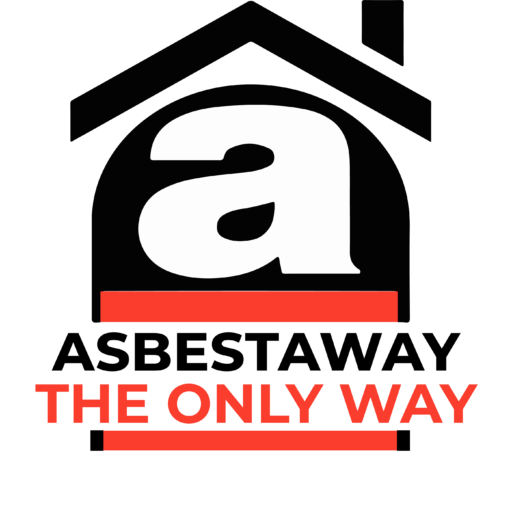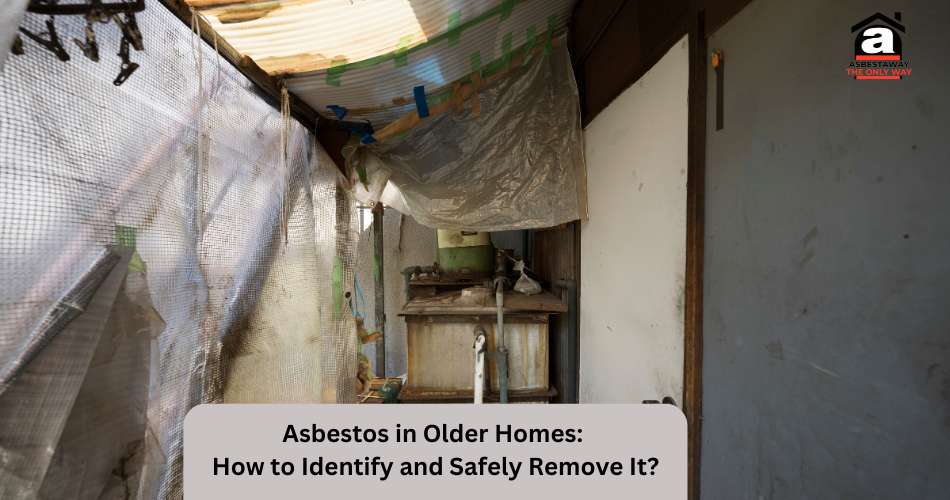Do you live in an older home? Have you ever wondered about the hidden dangers lurking within its walls? Today, we’re going to talk about something important: asbestos. What is it, why should you care about considering asbestos removal services? Join us as we explore the world of asbestos in older homes and learn how to keep your family safe. Let’s dive in!
What is Asbestos?
Asbestos is like a silent danger hiding in older homes. It’s not something you can see or smell, but it can cause serious health problems if it’s not handled carefully. Imagine tiny fibers, so small you can’t even see them, floating in the air. When people breathe in these fibers, they can get stuck in their lungs and cause diseases like cancer and lung problems. Asbestos used to be popular in building materials because it’s strong and fire-resistant. But now we know it’s not safe. That’s why it’s important to learn how to find and remove it from our homes.
Recognizing the dangers of asbestos exposure is the first step in ensuring the safety of your home and family. By understanding the risks and taking the necessary precautions, homeowners can effectively identify and safely remove asbestos-containing materials, protecting themselves and their loved ones from the devastating consequences of asbestos-related illnesses.
How to Identify Asbestos in Older Homes?
Asbestos was widely used in a variety of building materials due to its unique properties, making it essential for homeowners to be aware of the common locations where it may be found. From insulation to floor tiles, asbestos was a staple in the construction industry for many years, and its presence in older homes can pose a significant health hazard if not properly addressed.
a) Visual Inspection
First and foremost Visual inspection is best if you suspect asbestos in your home. You should take a thorough look around your home, paying close attention to materials like insulation, floor tiles, or roofing shingles. Asbestos-containing materials may appear old, worn, or damaged. Look for signs of deterioration or fraying, as these could release asbestos fibers into the air, posing a risk to your health.
b) Professional Inspection
Sometimes, asbestos fibers are not visible to the naked eye. So if you want to remove asbestos from old homes, hiring a certified professional from asbestos removal service s is important for a comprehensive inspection. These experts possess specialized equipment and knowledge to safely identify asbestos-containing materials in your home. Their expertise ensures accurate detection and minimizes the risk of exposure during the inspection process.
c) Building Records Review
Another step you can engage in the asbestos identification process is consulting your home’s building records. It can provide valuable insight into its construction history. Builders often documented the materials used, including those containing asbestos. Reviewing these records can help determine whether asbestos was present during the construction or renovation of your home, guiding your assessment and potential removal efforts.
d) Age of the Home
The age of your home can be a significant indicator of asbestos presence. Before the 1980s, asbestos was commonly used in various construction materials due to its desirable properties like fire resistance and durability. If your home was built or renovated during this period, there is a higher likelihood of asbestos-containing materials being present.
e) Asbestos Testing Kits
For additional certainty, consider using asbestos testing kits. These kits typically include detailed instructions on safely collecting samples from suspected materials in your home. Once collected, you can send the samples to a certified laboratory for analysis. While testing kits provide a DIY option for assessing asbestos presence, it’s essential to follow proper safety protocols to avoid exposure during sample collection and handling.
Steps for Safe Asbestos Removal In Older Homes
When it comes to asbestos, safety is paramount. Removing asbestos from older homes requires careful planning and expertise. In this section, we’ll outline the essential steps for safe asbestos removal, making sure you, your family, and the environment is fully protected during the process and later. Let’s look into the process of safeguarding your home.
a) Hiring a Certified Asbestos Removal Professional
It’s important to hire someone who knows how to remove asbestos safely. Asbestos management companies have certified professionals have special training and equipment to do the job right. They’ll assess your home, create a plan, and remove the asbestos without putting you or your family at risk. Don’t try to remove asbestos yourself – it’s too dangerous.
b) Creating a Removal Plan and Securing Necessary Permits
Before any removal work begins, the professional will develop a detailed plan. This plan outlines how they’ll remove the asbestos safely and dispose of it properly. They’ll also make sure to get any permits required by law. Following a plan and obtaining permits makes sure that the removal process is conducted legally and with minimal risk to everyone involved.
c) Proper Containment and Disposal of Asbestos-Containing Materials
During the removal process, the asbestos-containing materials will be carefully contained to prevent fibers from spreading. The professional will use specialized techniques, such as sealing off the work area and using protective gear, to minimize the risk of exposure. Once the asbestos is removed, it must be disposed of properly according to regulations to prevent any further harm to the environment or public health. You should always trust professionals to handle asbestos removal to ensure safety and compliance with regulations.
What are the Alternatives to Asbestos Containing Materials?
a) Modern Alternatives to Asbestos for Insulation and Construction:
Today, there are many safer alternatives to asbestos for insulation and construction. Materials like fiberglass, cellulose, and foam insulation provide similar benefits without the health risks of asbestos. These modern alternatives are lightweight, fire-resistant, and energy-efficient, making them ideal choices for home construction and renovation projects.
b) Retrofitting and Renovating Older Homes to Remove Asbestos:
Instead of simply removing asbestos-containing materials, some homeowners choose to renovate or retrofit their older homes. This involves upgrading or replacing outdated materials with safer alternatives. While it may require more time and investment initially, retrofitting can improve the overall safety and value of the home in the long run.
c) Sustainable and Eco-Friendly Building Materials:
In recent years, there has been a growing interest in sustainable and eco-friendly building materials. These materials are not only safer for the environment but also healthier for residents. Options like recycled glass, bamboo, and reclaimed wood offer durability and aesthetic appeal while minimizing environmental impact. Choosing sustainable building materials is a responsible choice for homeowners looking to create healthier living spaces while reducing their carbon footprint. By embracing these alternatives, we can build homes that are both safe and environmentally friendly, so that we can ensure a better future for generations to come.
Why Consider Asbestaway For Removing Asbestos From Older Homes?
a) Certified Professionals
At Asbestaway, we have a team of certified professionals who know how to handle asbestos safely. They’ve undergone extensive training and have the right equipment to ensure the removal process is done correctly.
b) Experience and Expertise
With years of experience in asbestos removal, we’ve encountered various scenarios in older homes. Our expertise allows us to develop customized removal plans according to each home’s unique needs.
c) Safety First Approach
Safety is our top priority. We follow strict safety protocols to protect our clients, their families, and our workers throughout the removal process. From containment to disposal, every step is carefully performed to minimize risks.
d) Compliance and Regulations
As the best Asbestos management Company, we adhere to all regulations and guidelines that regulate the asbestos removal. Our procedures are in full compliance with local, state, and federal regulations to ensure legal and ethical removal practices.
e) Peace of Mind
Choosing Asbestaway for asbestos removal provides peace of mind. You can trust us to handle the job professionally, efficiently, and safely, leaving your home free from asbestos hazards.
Conclusion
To wrap up, understanding and addressing asbestos in older homes is definitely important for safeguarding the health and well-being of occupants. By learning how to identify asbestos, hiring certified professionals for safe removal, and exploring alternative materials, homeowners can reduce risks and create safer living environments. Whether through retrofitting, renovation, or complete removal, prioritizing safety and compliance ensures peace of mind for residents and future generations. Remember, asbestos may be invisible, but its dangers are real. Taking proactive steps to address asbestos in older homes is a responsible choice that promotes both health and sustainability. Let’s work together to make our homes safer places to live.

